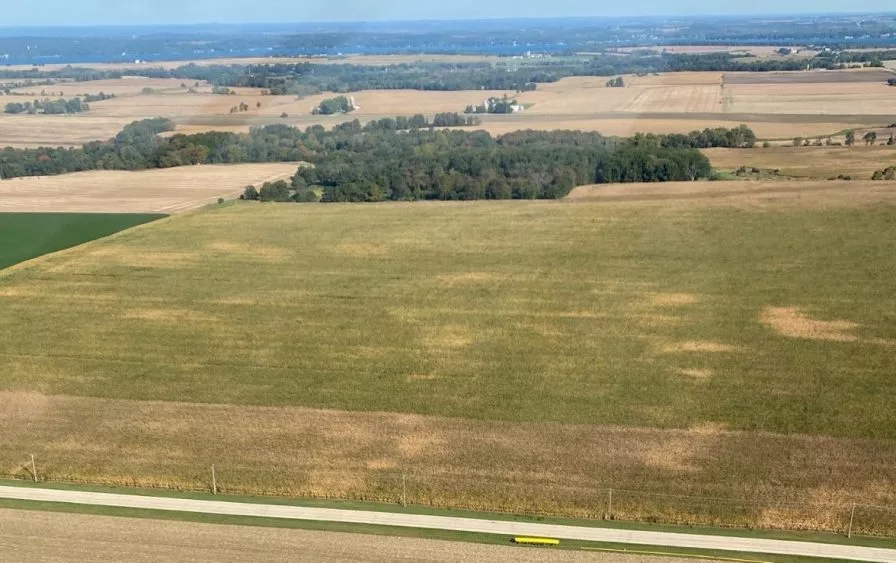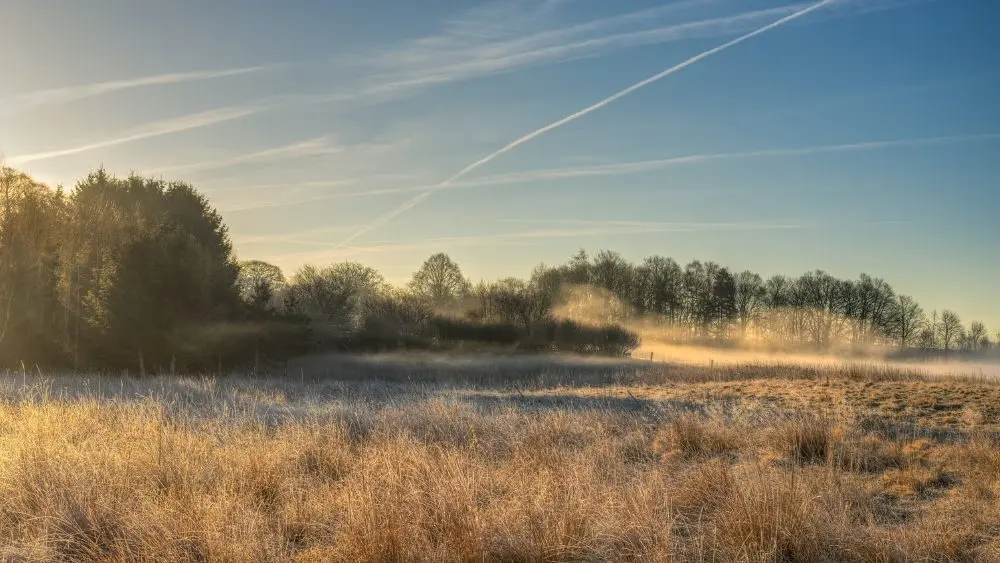
ALEXANDRIA, VA — A Wisconsin corn grower learned last year how well aerial application works to control diseases. The grower requested an aerial application of fungicide to control tar spot on 100 acres of corn. His aerial applicator immediately expressed concern about making the application because it was already late August, roughly 10-14 days after R4 growth stage, and the tar spot infection was severe. The aerial applicator felt it was far too late to make an effective fungicide application.
The grower understood that the late timing would likely fail to control the tar spot, but he wanted to experiment to see the results. The aerial applicator sprayed the field, leaving an untreated check strip to assess the effectiveness of the application. The first photo shows the difference between the treated field (middle portion of photo) and untreated check strip (lower portion of photo) was very distinct. The yield in the treated corn was 15 to 20 bushels higher than the untreated corn. The aerial application provided effective control of tar spot and protected yield despite being made well past the optimum application window.
The clear line between the treated and untreated parts of the field also demonstrated the precision of the aerial application. When viewed from within the corn canopy (second photo), the line separating the treated (left side) and the untreated (right side) sections of the field was just as visible. The aerial application was made with an 800-gallon turbine-powered airplane, guided by a state-of-the-art GPS, at an application rate of 2 gallons of spray per acre. The spray boom utilized a pulse width modulation nozzle control system, similar to those commonly used on ground sprayers. The nozzles were selected and set up based on research conducted by the USDA-ARS Aerial Application Technology Research Unit. The airplane’s spray pattern and droplet size were measured and evaluated[1] by trained professionals.
The results of this aerial application should leave no doubt for corn growers that when tar spot strikes, they can rely on their local aerial applicator to make a timely, accurate and effective fungicide application to save their corn. Growers are encouraged to regularly scout for diseases and other pests so applications can be made at optimal timing.
The National Agricultural Aviation Association is available to help growers Find An Aerial Applicator[2] for their work. Aerial applicators aren’t just available for fungicide applications though – they bring the same precision and effectiveness to insecticide, herbicide and fertilizer applications as well. Visit AgAviation.org to learn more about how professional aerial applicators can increase your farm’s productivity.
For more details on this application contact Dairyland Aviation[3], Waupun, WI.



